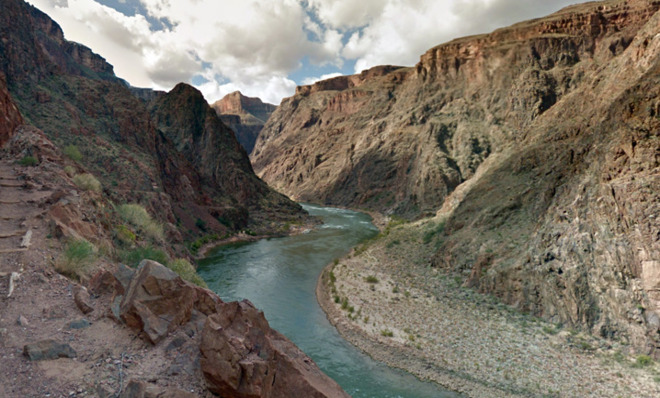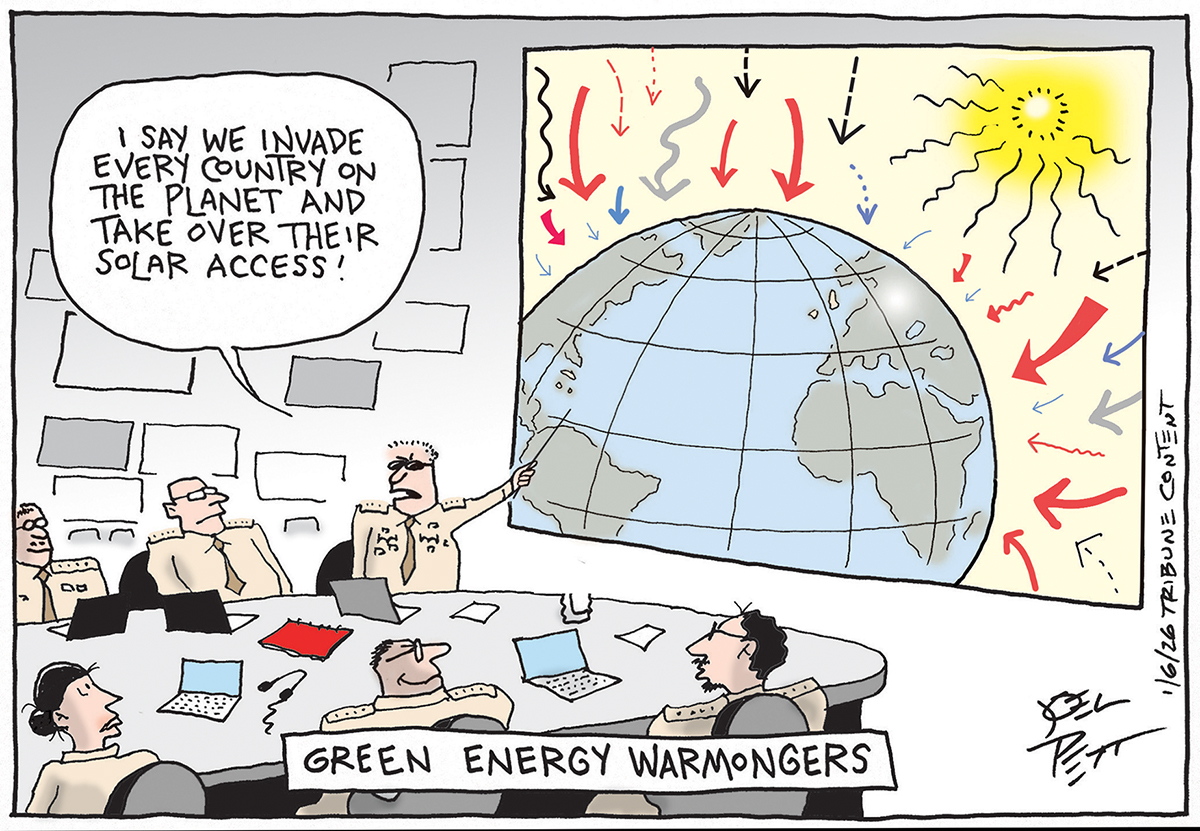The unprecedented water crisis of the American Southwest
A prolonged drought has sapped the once-vigorous Colorado River, threatening the water supply of millions

Why is the Colorado so important?
It's the lifeline of the arid Southwest. Starting off in the snowy Rocky Mountains of northern Colorado, the 1,450-mile river snakes its way through the Grand Canyon and southwest toward Mexico, supplying water to seven states — California, Nevada, Arizona, Utah, Colorado, New Mexico, and Wyoming. The river and its tributaries provide water for 40 million people in hot, thirsty cities such as Los Angeles, Las Vegas, San Diego, and Phoenix, while irrigating 4 million acres of farmland stretching from California's Imperial Valley to Wyoming's cattle herds. But with the Colorado's flow now reduced to a muddy trickle in parts, millions in the Southwest face the grave prospect of acute, permanent water shortages. The river "is a testament of what happens when we ask too much of a limited resource," said PBS filmmaker Peter McBride. "It disappears."
What's causing the problem?
The Week
Escape your echo chamber. Get the facts behind the news, plus analysis from multiple perspectives.

Sign up for The Week's Free Newsletters
From our morning news briefing to a weekly Good News Newsletter, get the best of The Week delivered directly to your inbox.
From our morning news briefing to a weekly Good News Newsletter, get the best of The Week delivered directly to your inbox.
The most immediate cause is 14 years of drought unrivaled in 1,250 years. Low snowpack in the Rocky Mountains has diminished the river at its source, while soaring summer temperatures over 110 degrees have evaporated its waters, depleted its reservoirs, and dried out huge swaths of soil — crippling farmers in the process. "I've got corn plants that are as brown as you could imagine," said Weld County, Colo., farmer Dave Eckhardt last summer, after losing more than 400 acres of his 1,400-acre crop. Colorado's supply crisis has been exacerbated by a demand problem: Millions of Americans have flocked to the Sun Belt to enjoy warmer temperatures, and have dug swimming pools and planted grass lawns that really don't belong in desert climates.
How bad is the water shortage?
It's severe. Authorities are now reducing the flow from Colorado's two parched reservoirs: Lake Powell, which supplies the upper Colorado basin, and Lake Mead, which supplies Los Angeles and Las Vegas. For the first time in the river's history, the amount of water flowing from Powell to Mead will this year be reduced by 750,000 acre-feet — enough to supply about 1.5 million homes. Officials say the reduction is necessary, given that Powell is at almost half its capacity. With Mead's levels just as low, officials in Nevada and other states are predicting an unprecedented water crisis. If Mead were to drop below 1,000 feet above sea level — it's currently at 1,106 feet — the lake would sink below the intake of the massive pipe that feeds water to several states. That means not just brown lawns and dry gardens, but stunted crops and higher food prices nationally. Those threats have sent Nevada and others scrambling to adapt.
What can they possibly do?
A free daily email with the biggest news stories of the day – and the best features from TheWeek.com
Quite a lot, actually. Arizona farmers have started using laser technology to keep their fields table flat and reduce runoff. The state now consumes as much water as it did in 1955, even though the population was then one twelfth what it is now. In southern Nevada, almost all water used indoors by the 40 million tourists who visit Las Vegas each year is recycled and returned to Lake Mead, and officials now claim that everyone could take a 20-minute shower every day and the city's water consumption wouldn't increase a single drop. Nevada is also digging a new, deeper inflow pipe from Lake Mead. San Diego, meanwhile, is attempting to build an expensive desalination plant so residents can start drinking the Pacific Ocean. But in the long run, none of these responses may suffice.
Why is that?
Climate experts believe the drought is a prelude to a new, drier era in which the river's flow is permanently diminished. "We can't depend on history to project the future anymore," said Carly Jerla, a geological hydrologist who closely monitors the Colorado. The river's wet 20th century may have been an anomaly; in the 13 centuries before the 1900s, its flow was actually 15 percent lower. The current drought may also be the product of a wider pattern of climate change, signifying a barren future: Several global-warming studies predict that rising temperatures will reduce the river's flow by up to 35 percent by 2050.
What will a drier future be like?
The states will have to make some grim compromises. California has subsidized the Central Arizona Project — an irrigation system of canals — in exchange for priority status during a drought. If water rationing begins in 2015, as predicted, Arizona will therefore have to bear the brunt of reductions — effectively killing agriculture as "an industry in central Arizona," according to the project's manager. Arizona is not likely to stand for such farming suicide. But California is determined to hold on to its full allotment of water, especially with its population projected to rise by 6 million by midcentury. With 15 percent of the nation's food produced on the region's Colorado-fed farmland, the struggle over resources will have national consequences, says Brad Udall, a director at the University of Colorado Law School. Southwesterners, he says, will "have to answer some very difficult questions," including whether farms are less important than cities. Someday, states may even have to start turning away new residents.
A river that doesn't reach the sea
For 6 million years, the Colorado River flowed southwest from the snowy Rocky Mountains to a sodden, 2-million-acre-wide delta in Mexico, finally emptying its 14 million acre-feet of freshwater into the Sea of Cortez. But in 1998, the river stopped reaching the sea. Its waters had been so depleted from constant diversion and damming that none remained to flow into the sea. Today, the delta is a "dry river cemetery," a barren moonscape dotted with abandoned boats, says Peter McBride, who made a PBS film about the river. While American states have desperately fought over the Colorado's resources, McBride says, they've totally disregarded how the water fight affects more than 3 million people in Mexico who also depend on it. "If the river ended in San Diego," he says, "I guarantee it wouldn't run dry."
Editor's note: This article originally misstated the size of California's population. It has since been corrected. We regret the error.
Frances Weaver is a senior editor at The Week magazine. Originally from the U.K., she has written for the Daily Telegraph, The Spectator and Standpoint magazine.
-
 ‘No Other Choice,’ ‘Dead Man’s Wire,’ and ‘Father Mother Sister Brother’
‘No Other Choice,’ ‘Dead Man’s Wire,’ and ‘Father Mother Sister Brother’Feature A victim of downsizing turns murderous, an angry Indiana man takes a lender hostage, and a portrait of family by way of three awkward gatherings
-
 Political cartoons for January 11
Political cartoons for January 11Cartoons Sunday’s political cartoons include green energy, a simple plan, and more
-
 The launch of the world’s first weight-loss pill
The launch of the world’s first weight-loss pillSpeed Read Novo Nordisk and Eli Lilly have been racing to release the first GLP-1 pill